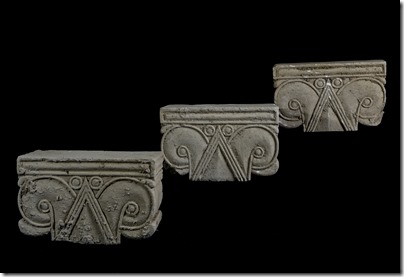I don’t usually take away from class time to talk about the latest (usually over-hyped) discovery, but I did today. The announcement of the discovery of three royal (Proto-Aeolic) capitals south of ancient Jerusalem is exciting, as it provides beautiful evidence of a building that once served Manasseh or Josiah.
The Jerusalem Post has a good write-up, including a 2.5 minute video that captures well the excitement of the moment of finding the second capital in an unexpected place.
One of the things that makes this discovery so interesting is that relatively few such capitals have been found over the last century of excavating in Israel. My notes may need some updating, but here is what I have for the locations, numbers, and dates of Proto-Aeolic capitals:
- Dan – 1 (9th c.)
- Hazor – 2 (9th c.)
- Megiddo – 13 (10th-9th c.)
- Samaria – 7 (9th c.)
- Gezer – possibly
- Jerusalem (City of David)- 1 (late Iron Age?)
- Ramat Rahel – 10 (late Iron Age)
- Medeibiyeh, Jordan – 1 (late Iron Age?)
This discovery of three in close proximity, along with their excellent preservation, surely stirs the imagination as to what impressive building stood here in the final decades before Jerusalem fell to Babylon.
Three Proto-Aeolic Capitals discovered near the Armon Hanatziv Promenade near the UN Headquarters. Photo courtesy of Shai Halevi, Israel Antiquities Authority.
